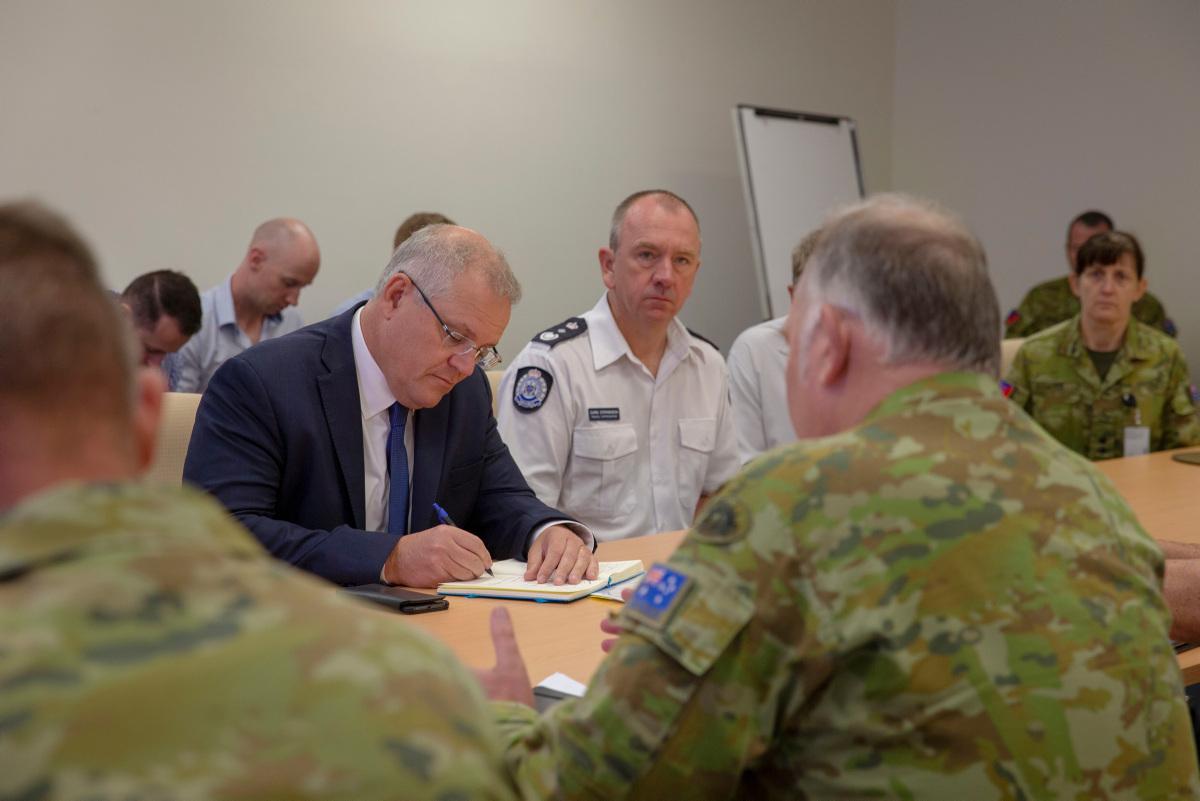Australia needs to train for disasters like this one
Posted By Tony McCormack on May 11, 2020 @ 13:42

In a nation as prone to disasters as Australia, it’s surprising that no day is set aside to remind people to check their own disaster preparedness. Nor is there a regularly scheduled exercise to test our disaster-response systems on a national level.
The prime minister, premiers, chief ministers and their cabinets may never have an opportunity to test their own disaster plans—until they’re confronted by a real crisis.
Few elected representatives have managed a complex disaster before coming to office. Consequently, the first time they’re faced with such a situation is when they’re responsible for leading the response to a real event. Some rise to the challenge, others struggle.
Every year, the Republic of Korea conducts its national mobilisation drill, the Ulchi exercises, to test its crisis-management systems and preparedness for conflict.
Ulchi is South Korea’s largest annual training event, involving around 480,000 personnel from government offices and other public institutions, and civilians. Until 2018, Ulchi was conducted alongside the major US–ROK summer military exercise, Ulchi Freedom Guardian, which added thousands of military personnel to the mix.
Importantly, the president and ministers actively participate in Ulchi, as do elected officials and public servants at all levels across the country.
In Japan, 1 September is Disaster Prevention Day when the population prepares for events like earthquakes, missile attacks, nuclear disasters, floods and typhoons. Exercises and emergency drills are held across the nation to ensure that it’s prepared at all levels and that its processes and procedures are effective and up-to-date. In Tokyo, the prime minister calls cabinet together so that the individual members of the government’s leadership team can be practised and tested in a crisis.
In Australia, disaster-response exercises with differing scenarios and of varying complexity are conducted across the country. Airports test procedures in the event of an accident; police, fire and ambulance services work with the state emergency services to prepare for events ranging from motor vehicle crashes to fires and floods. These activities are usually focused on a single situation rather than a multifaceted scenario.
While some involve multiple organisations, these exercises rarely test the entire the system and fewer still bring the Commonwealth, states and territories together around the same table.
An Australian national disaster preparedness day, with a national disaster-response exercise involving the prime minister and cabinet ministers, would provide an annual focus for the nation to ensure every citizen is prepared for a potential disaster.
Anyone with military experience will tell you that they spent most of their time on exercises rather than ‘doing it for real’. This training hones skills and provides an environment in which communications, planning, techniques, procedures, decision-making and individual skills can be tested and evaluated.
Exercising tests teamwork. You get to see how all the other players play and whether they do what you expect them to do. Weak points can be exposed, new ideas can be introduced, and if something doesn’t work, it can be reversed without consequences and an alternative can be tried.
A ‘battle rhythm’ can be established with times set for strategy meetings, videoconferences, staff briefings, reviews of outcomes, meal breaks and rest and rejuvenation. Using an established battle rhythm removes the need to create one from scratch when uncertainty and confusion reign.
Had Australia’s national cabinet been established before the Covid-19 pandemic struck, a framework could have been developed and tested to ensure a smooth, well-coordinated and quick response.
Exercises also have many intangible benefits. A well-planned and well-structured exercise allows participants to learn about themselves—how they perform under stress, how well they work with a team, how good their capacity for decision-making under pressure is, and how their personal resilience stands up. It also provides them with insights into their colleagues’ capacities.
When someone talks on a new responsibility, there’s learning to be done before they become effective. Politics is no different.
Introducing a national disaster-response exercise would ensure elected representatives and officials, from the prime minister down, experience crisis-management before being plunged into the real thing. It would also give ministers the opportunity to be coached and mentored to prepare them for what could be a career-defining role.
In responding to the Covid-19 pandemic, Prime Minister Scott Morrison and his government have shown that they learned from the bushfire crisis, particularly about the jurisdictional and political divide between the Commonwealth and the states and territories, and the expectations of the Australian people.
A national exercise will ensure the nation’s leaders fully understand the role of each layer of government, every department and agency, and the private sector: where they intersect, where the rub points are, what the redundancies are, and what the gaps and shortfalls are.
And the exercise must go beyond natural disasters to include scenarios dealing with terrorist attacks, health incidents, financial crises, and supply-chain disruptions.
A national exercise will test intergovernmental, interdepartmental and interagency links. It will strengthen relationships and facilitate shared goals and understanding between those who make the decisions and those who enact them.
Most of all, it will mean that when the next crisis emerges the nation’s leaders won’t approach it from a standing start.
Article printed from The Strategist: https://aspistrategist.ru
URL to article: /australia-needs-to-train-for-disasters-like-this-one/
Click here to print.